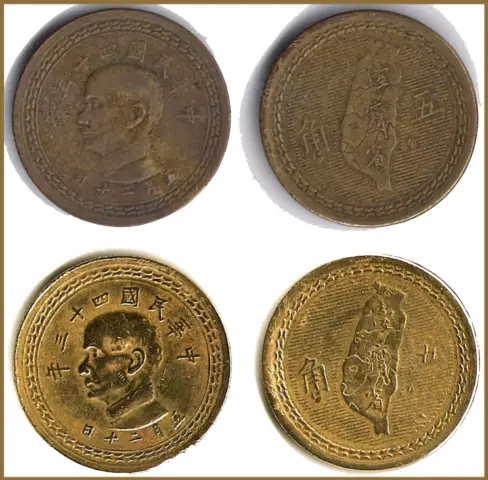How To Clean Wheat Pennies Without Damaging Them
This post may contain affiliate links. If you purchase through these links, we may earn a small commission at no additional cost to yourself.

OK, as I always start every post I write about how to clean coins, I'm going to put this blanket statement out right now: I strongly urge anybody who wants to clean their coins to reconsider. Why? Because an improper cleaning can ruin a coin's value, damage its surface, and deny future generations the chance to enjoy your coin in its wholly original form.
That being said, some people will still engage in cleaning coins anyway in an often ill-fated attempt to make it look brand new again.
While most posts usually tell you HOW to clean coins, I'd like to try something different: tell you how NOT to go about cleaning your coins. After all, there really is only one way to clean your coins safely, but unfortunately many of the popular methods seen online are actually detrimental to coins and could leave yours with only a fraction of their original collector value.
So, what ways shouldn't you clean your coins? Here's a debunking of some popular coin cleaning recommendations:
Why You Shouldn't Clean Coins With Toothpaste – It Certainly Won't Whiten Abraham Lincoln's Teeth
You've probably seen a few websites that suggest your coin's pearls need to be a little whiter. However, you'd be better if you skip making your coins minty fresh. Toothpaste is a highly abrasive agent that will strip away more than just plaque – it could literally remove metal right from your coin. I used to experiment with rubbing toothpaste on some of my coins years ago, but I ended up ruining every coin I cleaned with it. Each victimized coin looked unusually shiny, and 5X magnification revealed countless tiny striations in the surface, rendering the coins almost worthless.
Ketchup Isn't How I Clean Coins Unless I Want To Eat Them Fried
Who doesn't love a little ketchup with their French fries? Some people love ketchup so much they even put it on their coins… well, maybe not because ketchup makes coins taste any better, but because the shiny, red condiment can help remove grime, grease, and other surface adherents from coins. The highly acidic nature of ketchup helps lift away dirt and debris when gently rubbed onto coins. However, the acid can also wash away a coin's patina, significantly lowering the value of the coin.
Baking Soda And Vinegar – Great For Science Fair Volcanoes But Not For Enhancing Your Coins' Value
When I first began collecting coins and wanted to learn how to clean them, I learned that mixing baking soda and vinegar in a glass creates a highly potent solution that can strip away dirt and grime from coins. All that has to be done is to mix the baking soda and vinegar together (about 1 part baking soda and 4 parts vinegar is the ratio I always followed) in a bowl or glass then immerse the coins you want to clean; this mixture seems to work especially well on pennies. In fact, it works so well that, like the other coin cleaning brews mentioned here, it can completely strip away the original patina and obliterate the value of the coin.
Here's how it's done:
Metal Polish Will Tarnish Your Coins' Value
You can't watch daytime TV without seeing at least one or two ads touting the latest and greatest silver or copper polish. Maybe you've even thought of buying some for yourself so you can shine your old coins right up! Well, perhaps you'll want to save your $9.95 bottle of Shiny-O for your jewelry, pots, and pans, because all of the metal cleaners, dips, and polishes you've seen advertised on TV or on the shelves at your neighborhood big box store will ruin your coins' surface patina. In some cases, these metal cleaners contain caustic chemicals that will permanently damage the coin.
How DO You Clean Coins, Then?
There's only one method I recommend to anyone who wishes to clean their coins, and that is to hold them under gently running tepid water for a few moments, then gingerly patting the coin dry with a soft cloth. What this does is wash away loose surface particles without damaging the coin's delicate surfaces.
And, the beauty of cleaning a coin this way is that it really isn't even considered "cleaning" at all, by most standards. That's because a coin is usually only considered "cleaned" if it shows hairlines or other signs of damage consistent with an abrasive cleaning, such as would be caused by the methods explained earlier in this post.

I'm the Coin Editor here at TheFunTimesGuide. My love for coins began when I was 11 years old. I primarily collect and study U.S. coins produced during the 20th century. I'm a member of the American Numismatic Association (ANA) and the Numismatic Literary Guild (NLG) and have won multiple awards from the NLG for my work as a coin journalist. I'm also the editor at the Florida United Numismatists Club (FUN Topics magazine), and author of Images of America: The United States Mint in Philadelphia (a book that explores the colorful history of the Philadelphia Mint). I've contributed hundreds of articles for various coin publications including COINage, The Numismatist, Numismatic News, Coin Dealer Newsletter, Coin Values, and CoinWeek. I've authored nearly 1,000 articles here at The Fun Times Guide to Coins (many of them with over 50K shares), and I welcome your coin questions in the comments below!
How To Clean Wheat Pennies Without Damaging Them
Source: https://coins.thefuntimesguide.com/how-to-clean-coins/
Posted by: robinsontheessale1962.blogspot.com

0 Response to "How To Clean Wheat Pennies Without Damaging Them"
Post a Comment